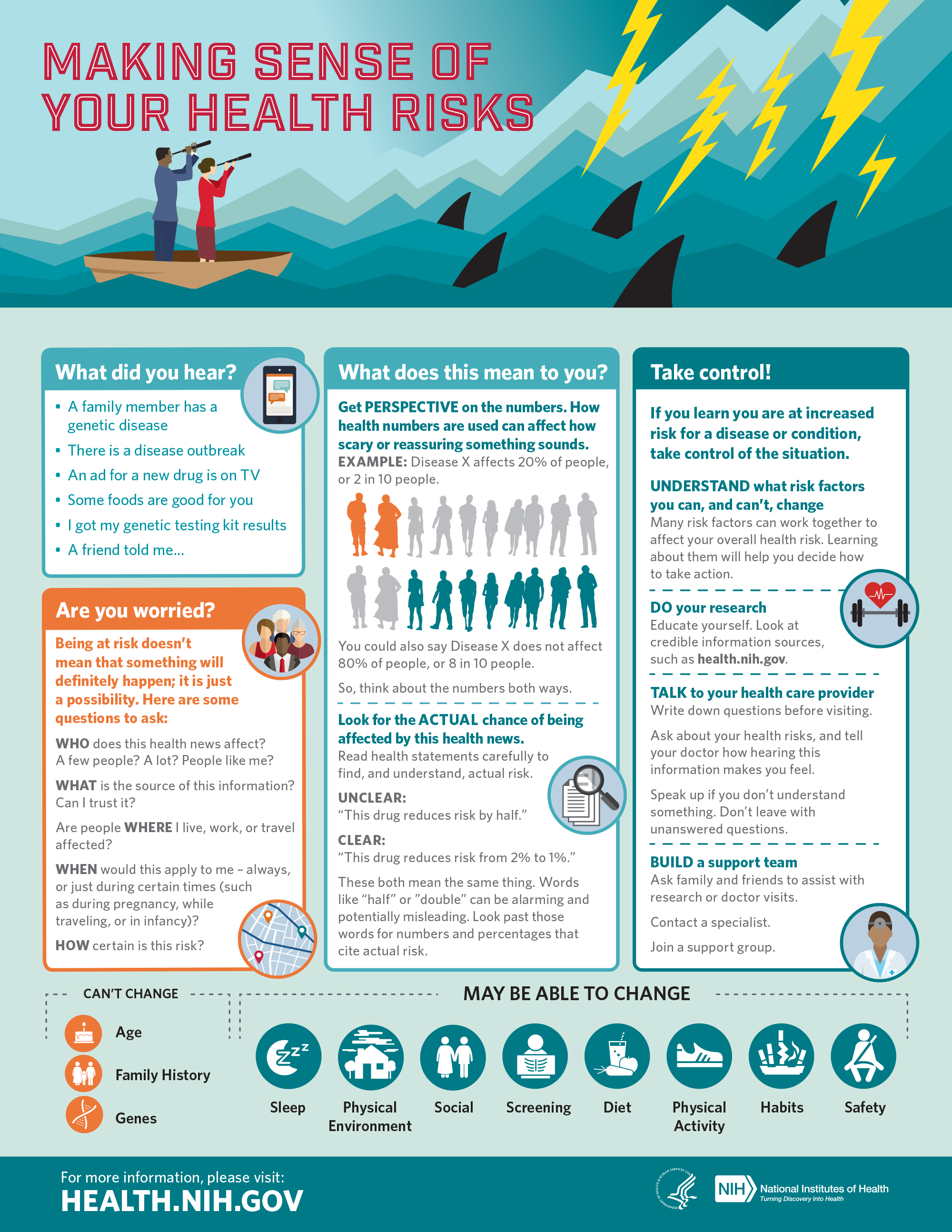You are here
June 12, 2017
The Challenges of Understanding and Communicating Health Risks
Risks are all around us. A nearby sneeze may raise your risk for catching the flu. Obesity boosts the odds you’ll get diabetes. Smoking increases your risk for many cancers. News headlines warn ominously about deadly food poisoning, Zika infection, shark attacks, and more. Understanding and putting these health risks into perspective is key to making good health care decisions.
Health communicators of all kinds—from researchers to journalists to health care workers—often find themselves talking and writing about risks. Most people intuitively have some understanding of risk, but it’s far from a simple concept. Putting health risks into perspective can be a challenge even for seasoned professionals. Depending on your audience, risk can be interpreted differently than you intended.
Simply put, a health risk is the chance or likelihood that something will harm or otherwise affect someone’s health. This doesn’t mean that it will definitely happen. When discussing health risks, it’s important to make clear that this is just a possibility. People need to know who this risk affects, where, when, and how certain the risk is. In addition, several risk factors can affect different aspects of a person’s health. How does this risk relate and compare to others?
Health risks can be especially hard for people to grasp when emotions run high, such as during a pandemic or when someone is faced with a serious illness. One recent NIH-funded study found that people with advanced cancer tended to expect better outcomes and longer survival times from treatment than their doctors did. Most patients didn’t realize that their outlook differed from their doctors. Such misunderstandings might affect whether patients choose to undergo harsh treatments.
We’ve developed a one-page guide to help put health risks into perspective. We hope it can serve as a useful resource to help explain health risks, whether you’re describing the results of a study to the public or potential treatments to a patient. We raise key questions to address, such as who is affected by a risk and how to use numbers to present health risks. A final graphic focuses on what factors people might be able to change to reduce health risks and improve their health. Please take a look and share your thoughts with us by sending an email to [email protected].

